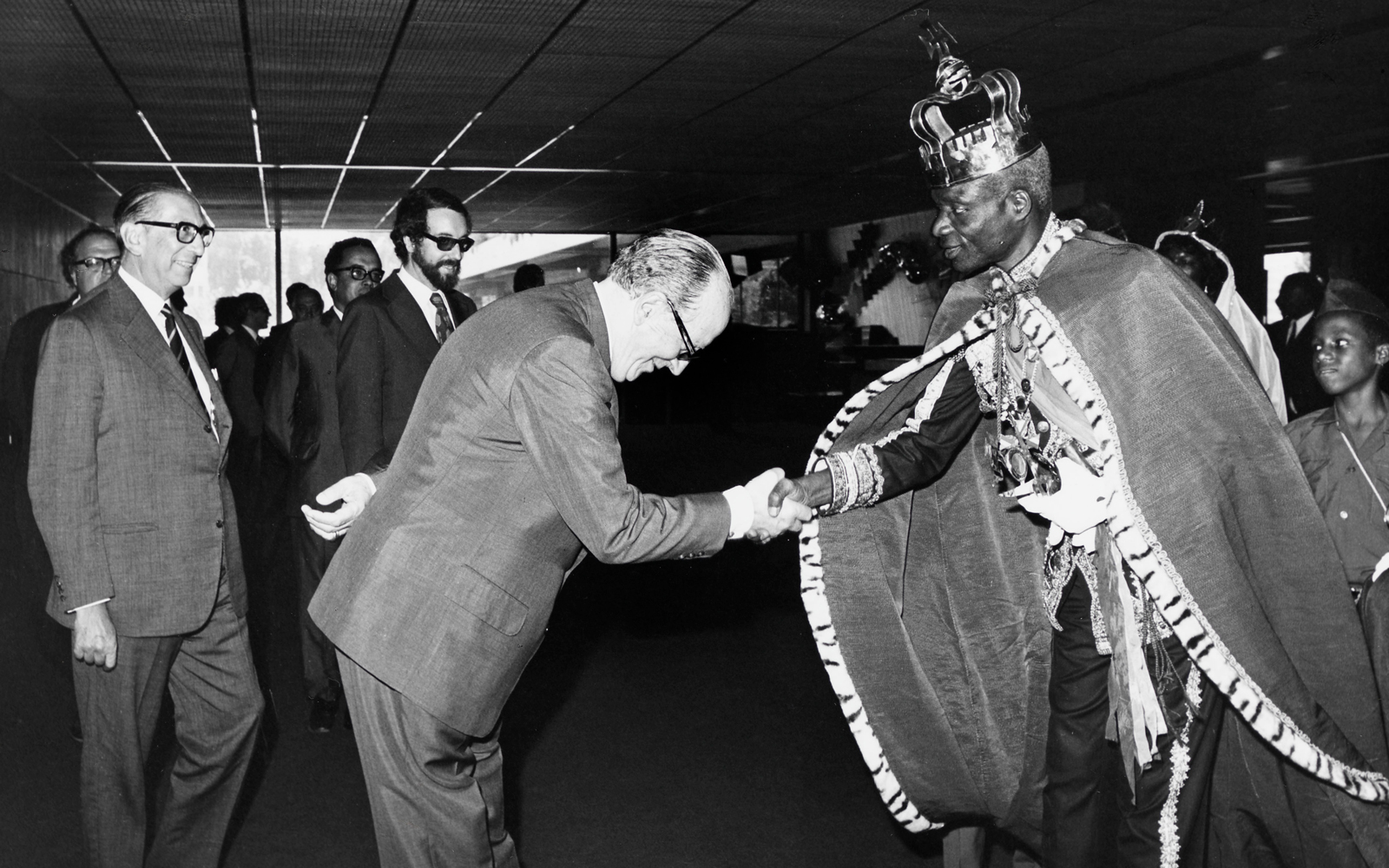Tchiloli: a trip to Europe

Before the presentation at the Calouste Gulbenkian Foundation, in 1972, the group Formiguinha da Morte “could not sleep”, says Amâncio Carvalho. “We rehearsed everyday with Portuguese figures, to see what is right, what is wrong, the way you sit, the way you have to pick up the fork, the knife…”.
The investment of the Calouste Gulbenkian Foundation in bringing Tchiloli to Portugal, according to Carlos Wallenstein (director of the Theatre Section of the Gulbenkian Foundation between 1963 and 1990) and as described in the catalogue of the Traditional Popular Theatre Cycle (in 1973), had two goals: “To provoke, whenever possible, the recreation of the shows in the specific localities where they were staged with a certain regularity; and make known to the public in the capital, who cannot travel to these places, these works of popular art that are, at the same time, valuable cultural and ethnographic documents ”.
This is the fourth and final episode of the documentary series dedicated to Tchiloli – Creole name for the play The Tragedy of the Marquis of Mantua and Emperor Charlemagne -, one of the most important forms of expression of African culture for different families and generations on the island of São Tomé.
Watch the fourth episode by Inês Gonçalves
With a tradition of more than 500 years, Tchiloli stages a story involving death and betrayal, passions and moral conflicts capable of thrilling both the audience and the actors, where music, movement and the body come together in a surprising expression of African art and culture. It has been supported several times by the Calouste Gulbenkian Foundation. Since January 2019, it is supported through the project “(Re)Criar o Bairro”, led by the ONGD “Leigos para o Desenvolvimento”, that aims to highlight the products associated with the cultural heritage of Bairro da Boa Morte, in São Tomé, through visual and performative arts and also technology.
Despite that stated by the interviewees, there is no known documented evidence in support of the affirmation that Tchiloli has existed in Sao Tome ever since the 16th century.
